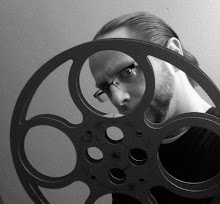With no new films to review for the foreseeable future, Reel Speak’s new feature, Reel Retro Reviews, will randomly review a classic film from the TCM broadcast schedule every Monday. Not just for the sake of filling time, but to hopefully introduce some classic, overlooked, and perhaps forgotten screen gems to those of us who may be unfamiliar or unawares of their existence.
The Korean War has not received as much cinematic attention as the Vietnam War and World War II. Samuel Fuller’s THE STEEL HELMET may not go down in history as the best film to go to Korea, but it is the very first to do so, and marches ahead boldly to blaze a path for all war films to follow.
Sgt. Zack (Gene Evans), is the lone survivor of prisoners executed by the enemy. He is assisted by a young boy (William Chun), whom he nicknames Short Round. The two cross paths with Cpl. Thompson (James Edwards), a black medic and eventually a patrol led by Lt. Driscoll (Steve Brodie)…on a mission to secure an abandoned temple as an observation post.
Shot on a shoestring budget over just 10 days while the Korean War was still going on, THE STEEL HELMET does not have much by way of plot or scale. There is no real grand mission to accomplish, and the film only follows the patched-together unit as they survive one scrap after another to get to the abandoned temple…which may not be as empty as they thought. Director Samuel Fuller, who was drawing on his own experiences as a WWII vet, makes up for the lack of plot by weaving in themes of worldwide racism; a scene where a North Korean prisoner baits Thompson into a conversation about American’s Jim Crow laws is very well done and speaks volumes. There is also the ongoing relationship between Sgt. Zack, who is portrayed as gruff and mean, and Short Round…with Short Round constantly having to remind Zack that he doesn’t like to be called the G-word. Fuller also tacks on the ethics of the treatment of prisoners of war for good measure.
Fuller doesn’t hang his helmet on race and war ethics, and he manages to shoot a film that ramps up the tension nicely. A scene where the patrol is pinned down by a sniper is very well done, and seems to be the inspiration for where Stanley Kubrick would take his own war film, FULL METAL JACKET (1987), thirty years later. Scenes inside the temple where a hidden threat plays a deadly game of cat-and-mouse are also well done and border on a horror film. The film’s lone drawback is its low budget which really shows. Exterior scenes shot in a park look great, but the film later shifts to a jungle set with the fakest looking plants of all time. There also several “extras” who look right at the camera, and scenes where the troops are in a tower looking out over the countryside are a laugh…as they’re looking an obvious blank wall.
THE STEEL HELMET could be considered to be a B-movie with its flaws, but its strengths are many. The performances are excellent all around, and the battle scenes, enhanced by military stock footage, really work despite their simplicity. Today’s military dramas play a lot with ethics and race issues; all themes that started with THE STEEL HELMET.
BOTTOM LINE: See it
*
Reel Facts: THE STEEL HELMET infuriated the U.S. military at the time with its scene of a prisoner of war being executed. Fuller was summoned to the Pentagon where he was able to confirm that such things did happen, using his own WWII service as proof.


No comments:
Post a Comment
A few rules:
1. Personal attacks not tolerated.
2. Haters welcome, if you can justify it.
3. Swearing is goddamn OK.